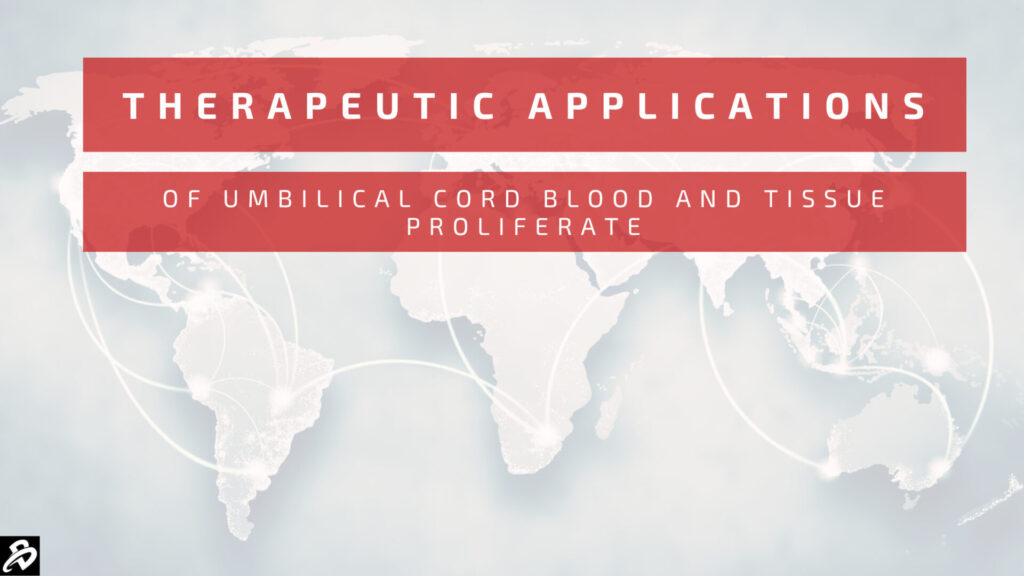Cancer treatment using very high-dose chemotherapy or radiation therapy often results in severe injury to a patient’s blood-forming cells, called their hematopoietic (“blood formation”) system. Therefore, radiation therapy is soon followed by hematopoietic stem cell transplantation (HSCT), which is a method of reconstructing a patient’s blood system that has been destroyed by cancer treatment. Cord blood can also be used as a source of stem cells for hematopoietic stem cell transplantation (HSCT), providing an important alternative to the traditional options of peripheral blood and bone marrow transplant. Importantly, bone marrow and peripheral blood require full tissue matching for use in HSCT, while umbilical cord blood only requires partial matching.
Blood-forming hematopoietic stem cells (HSCs) can differentiate into any of the three types of blood cells: red cells, white cells or platelets. Cord blood stem cell transplants are now successful in treating patients for nearly 80 diseases, including acute lymphocytic leukemia (ALL), acute myelogenous leukemia (AML), myelodysplastic syndromes (MDS), chronic myelogenous leukemia (CML), juvenile chronic myelogenous leukemia (JCML), chronic lymphocytic leukemia (CLL), Hodgkin and non-Hodgkin lymphoma, neuroblastoma, thalassemia, severe combined immune deficiency (SCID), Wiskott-Aldrich syndrome, metabolic diseases such as adrenoleukodystrophy and Hurler syndrome, and severe aplastic anemia.
According to the latest data provided by WMDA, between 1997 and 2021, a total of 357,646 HSC transplants were performed worldwide, and 61,606 of those transplants used cord blood stem cells. Peripheral blood stem cells were used in 208,186 of these transplants and bone marrow stem cells were used in 87,854 of the transplants.
This means cord blood stem cells were used in 17.23% of these transplants (61,606 / 357,646 = 17.23%), while peripheral blood stem cells were used in 58.21% ( 208,186 / 357,646 = 58.21%) and and bone marrow stem cells were used in 24.56% (87,854 / 357,646 = 24.56%).
Percentage of HSCTs by Source
- Cord blood stem cells – 17.23%
- Peripheral blood stem cells – 58.31%
- Bone marrow stem cells – 24.56%
Put simply, the stem cells used within hematopoietic stem cell transplantation (HSCT) can be obtained from three sources (bone marrow, peripheral blood, or umbilical cord blood) but it is substantially more common to use peripheral blood stem cells over other available options.
Ex Vivo Cord Blood Expansion
Currently, the biggest problem with cord blood transplantation is the limiting number of stem and progenitor cells in an unmanipulated cord blood unit. This limited cell dose is associated with delayed engraftment, which correlates with a well-documented increase in patient morbidity and mortality.
Today, companies like Gamida Cell in Israel and Nohla Therapeutics in Seattle, Washington, are exploring novel technologies for ex vivo (“outside the body”) expansion of cord blood cells that could overcome these limitations. Recently, Gamida Cell achieved a major breakthrough in ex vivo cord blood expansion with the U.S. FDA approval of its expanded cord blood cell therapy “Omisirge” on April 17, 2023.
This approval was for a single intravenous dose of stem cells from a donor’s expanded umbilical cord blood cells that are processed and cultured with nicotinamide (a form of vitamin B3). It is the first allogeneic (“donor”) ex vivo expanded cord blood product to be approved globally.
It represents a major breakthrough within the cord blood sector because it is the first time that the stem cells present within an umbilical cord blood unit can be effectively (and legally) expanded outside the body for use in treating adult patients.
Cord blood and cord tissue stem cells also have the potential to be used in a wide range of cellular therapies to address diseases that include cerebral palsy, autism, neurodegenerative decline, and other serious conditions. One of the best-known authorities in this space is Dr. Joanne Kurtzberg, an internationally renowned expert in umbilical cord blood transplantation and its utilization within the emerging field of cellular therapy. Additionally, cord blood stem cells can be targets for genetic manipulation and may be a viable source for gene delivery to the hematopoietic system.
The regenerative potential of umbilical cord blood is further supported its ability to act as a readily available source of angiogenic and vascular progenitors. The promise of using of cord blood for regenerative applications has led to a series of clinical trials that have provided evidence that it could be used to treat treat a range of disorders that include autism, cerebral palsy, brain injury, spinal cord injury, cognitive decline, stroke, cirrhosis, diabetic complications, and potentially, a host of other medical complications.
